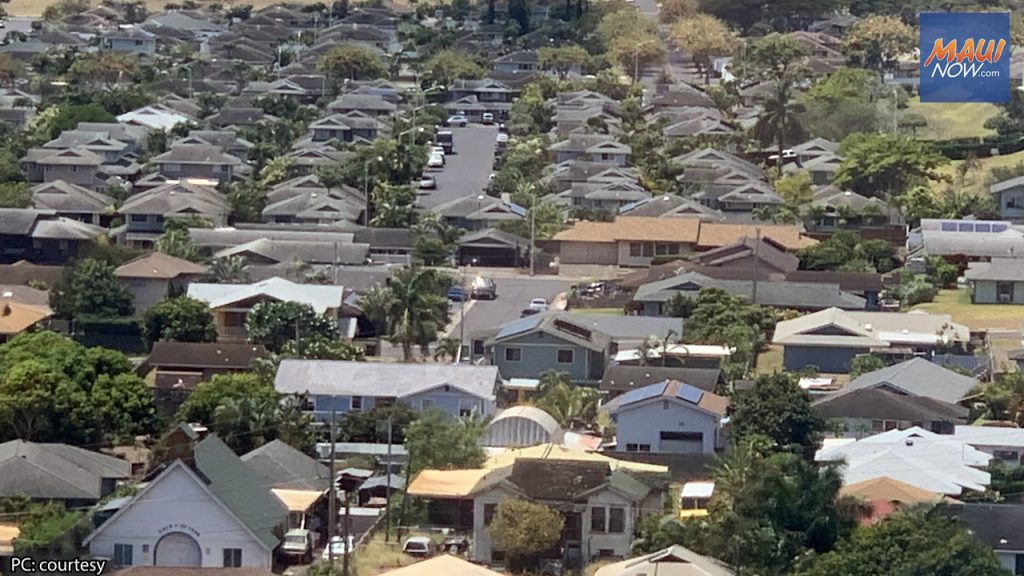Council refers accessory dwelling bill to Housing and Land Use Committee

Maui County Council members referred to the Housing and Land Use Committee on Tuesday a bill stemming from a new state law that requires counties to change the way accessory dwellings are permitted on residential property.
Aimed at easing Hawaiʻi’s severe housing shortage, Senate Bill 3202 was signed into law as Act 39 by Gov. Josh Green on May 28.
Currently, Maui County allows construction of two accessory dwellings, known as ʻohana units, on Maui island residential properties 7,500 square feet or larger. Only one ʻohana is allowed on residential lots on Molokaʻi and Lānaʻi.
To comply with the new state law, Maui County will need to allow ʻohana units on all residential properties within all of Maui County, regardless of lot size or island location. The deadline to comply is Dec. 31, 2026.
The law prohibits private covenants for residentially zoned lots within an urban district from limiting the number of accessory dwelling units below the amount set by state law. It also requires any administrative authority to act on any application for subdivision, consolidation or re-subdivision for certain parcels to be vested in the director of the county agency responsible for land use or another county officer.
The law does not stop a county from denying a permit for an accessory dwelling if utility infrastructure is insufficient to provide service for the additional demand of more housing.
During its regular meeting Tuesday, the County Council took up a proposed resolution to refer to the Maui, Molokaʻi and Lānaʻi planning commissions a bill to amend the Maui County Code’s provisions relating to the number of accessory dwellings per lot.
West Maui Council Member Tamara Paltin questioned how the new law would apply to substandard roads and lot sizes and even evacuation routes — all concerns for old areas of Lahaina, such as Mill Camp, hard-hit during the Aug. 8, 2023, wildfire disaster. Substandard residential lots in some areas are less than 300 square feet, she said.
Paltin also said she didn’t want the legislation for accessory dwellings to delay the Council’s consideration of Bill 105. In the wake of massive destruction in the wildfire aftermath, the measure allows structures and uses that were non-conforming with the Maui County Code before the wildfires to be rebuilt and used as they had before. (More detail on the bill is available in its transmittal.)
Reviewed by the county planning commissions in February, the bill changes the code’s nonconformity section to include structures and uses that were affected by a disaster. Specifically, the change would allow nonconforming structures and uses impacted by the August wildfires, and future disasters, to be re-established even if more than 50% of the structure was damaged. The amendment provides for a four-year timeframe to rebuild the structures or re-establish property uses.
On Tuesday, Council members discussed different options for considering the accessory dwelling bill, but ultimately decided to refer it to committee because there’s as much as two years to better understand the measure’s implications and take action accordingly.









